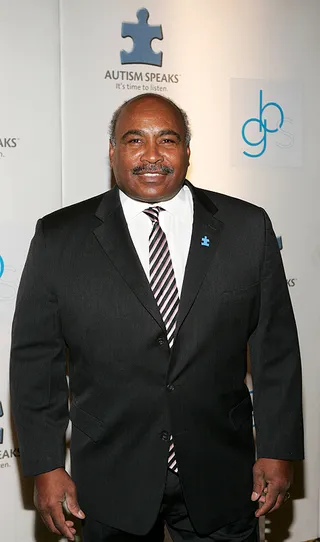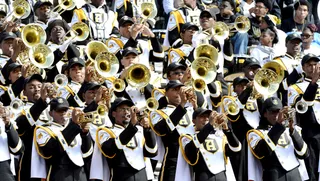How Integration Changed HBCU Sports
A look at Black college sports before and after segregation.

1 / 10
Integration and HBCU Sports - Black athletes, especially in Southern states, played for historically Black colleges and universities before segregation was ruled illegal in 1954. HBCUs produced top talent at the time, but as African-Americans integrated into predominantly white institutions, some of the best athletes also went there. BET.com takes a look at the history of how integration has impacted HBCU sports. – Natelege Whaley (Photo: David J. Phillip/AP Photo)

2 / 10
Black Athletes Are Half of NCAA D-I Basketball and Football - As of 2012, African-American males were 43.2 percent of student-athletes in Division I college football and 57.2 percent in basketball, according to a report by the Institute for Diversity and Ethics in Sport. African-American female student athletes were 47.9 percent of Division I basketball players. (Photo: Doug Pensinger/Getty Images)

3 / 10
Formation of CIAA in 1912 - The nation’s oldest Black athletic conference was founded in 1912 as the Colored Intercollegiate Athletic Association and was made up of HBCUs from Pennsylvania to North Carolina. Black colleges in other regions followed, leading to the formation of the Southern Intercollegiate Athletic Conference in 1913, the Southwestern Athletic Conference in 1920 and the Mid-Eastern Athletic Conference in 1970. (Photo: CIAA/Facebook)

4 / 10
Integration of College Sports - Before segregation was ruled illegal in 1954, Black athletes integrated conferences in the North as early as 1892. Paul Robeson, pictured above, was the first Black player for Rutgers University football after enrolling in 1915. As a Columbia University student, George Gregory was the first Black college basketball player in 1931. (Photo by Sasha/Getty Images)

5 / 10
Basketball Stars From Black Colleges - Willis Reed, a two-time NBA champion and former MVP, was one of many basketball legends who dribbled on HBCU courts. Reed attended Grambling State before playing for the New York Knicks from 1964 to 1974. Bobby Dandridge of Norfolk State also played for HBCUs because few colleges recruited Blacks. (Photo: AP Photo/File)
ADVERTISEMENT

6 / 10
HBCUs Former Talent Hub for Pro Football - HBCU football produced stars as well. Morgan State’s Willie Lanier was a former all-star and Super Bowl champion who played for the Kansas City Chiefs in the 1960s and '70s. Grambling State also produced the pro football Hall of Famer Willie Davis who won five championships with the Green Bay Packers. (Photo: Thos Robinson/Getty Images for Autism Speaks)
Photo By Photo: Thos Robinson/Getty Images for Autism Speaks

7 / 10
Brown V. Brown Integrates Southern University Teams - Even after Brown V. Board of Education ruled against segregation, the Southeastern Conference remained all-white until 1966. Nat Northington and Greg Page became the first two African-Americans athletes in the Southeastern Conference as players for Kentucky State’s football team. By 1971, every school in the SEC had at least one Black player, according to ESPN. (Photo: Kentucky/Collegiate Images/Getty Images.)

8 / 10
Integration Led to More Competition - For Black players, PWIs were an attractive option because they were better funded and had better chances of winning a NCAA championship. In 2013, North Carolina A&T’s men’s basketball team was defeated in the second round of the NCAA tournament. Hampton University's volleyball team entered the national championship but was defeated by Stanford. (Photo: EUTERS /JOHN SOMMERS II /LANDOV)

9 / 10
Financial Setbacks - As HBCU sports departments move forward, financial setbacks will continue to be a challenge. Between 2006 and 2011, six HBCUs were listed among the 10 public NCAA D-I institutions with the least revenue, according to USA Today. None were in the top ten. (Photo: Charlotte Observer/MCT /Landov)
